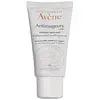What's inside
What's inside
 Key Ingredients
Key Ingredients

 Benefits
Benefits

 Concerns
Concerns

No concerns
 Ingredients Side-by-side
Ingredients Side-by-side

Water
Skin ConditioningOctyldodecanol
EmollientGlycerin
Humectant1,2-Hexanediol
Skin Conditioning4-T-Butylcyclohexanol
MaskingAcrylates/C10-30 Alkyl Acrylate Crosspolymer
Emulsion StabilisingBHT
AntioxidantCI 42090
Cosmetic ColorantCaprylyl Glycol
EmollientDisodium EDTA
Hesperidin Methyl Chalcone
AntioxidantMethyldihydrojasmonate
MaskingPongamia Glabra Seed Oil
Skin ConditioningSodium Hydroxide
BufferingTocopheryl Acetate
AntioxidantTropolone
Skin ConditioningWater
Skin ConditioningGlycerin
HumectantButyrospermum Parkii Butter
Skin ConditioningOctyldodecanol
Emollient1,2-Hexanediol
Skin ConditioningAmmonium Acryloyldimethyltaurate/Vp Copolymer
Propanediol
SolventMenthone Glycerin Acetal
RefreshingAcrylates/C10-30 Alkyl Acrylate Crosspolymer
Emulsion StabilisingPolyacrylate Crosspolymer-6
Emulsion StabilisingBoron Nitride
AbsorbentHydroxyacetophenone
AntioxidantSodium Hydroxide
BufferingEscin
TonicEthylhexylglycerin
Skin ConditioningTocopheryl Acetate
AntioxidantChenopodium Quinoa Seed Extract
Skin ConditioningParfum
MaskingDisodium EDTA
Inulin Lauryl Carbamate
Emulsion StabilisingLeontopodium Alpinum Flower/Leaf Extract
Skin ConditioningOenothera Biennis Flower/Leaf/Stem Extract
Skin ConditioningHydroxystearic Acid
CleansingT-Butyl Alcohol
PerfumingSodium Benzoate
MaskingCitric Acid
BufferingCI 42090
Cosmetic ColorantCI 19140
Cosmetic ColorantTocopherol
AntioxidantWater, Glycerin, Butyrospermum Parkii Butter, Octyldodecanol, 1,2-Hexanediol, Ammonium Acryloyldimethyltaurate/Vp Copolymer, Propanediol, Menthone Glycerin Acetal, Acrylates/C10-30 Alkyl Acrylate Crosspolymer, Polyacrylate Crosspolymer-6, Boron Nitride, Hydroxyacetophenone, Sodium Hydroxide, Escin, Ethylhexylglycerin, Tocopheryl Acetate, Chenopodium Quinoa Seed Extract, Parfum, Disodium EDTA, Inulin Lauryl Carbamate, Leontopodium Alpinum Flower/Leaf Extract, Oenothera Biennis Flower/Leaf/Stem Extract, Hydroxystearic Acid, T-Butyl Alcohol, Sodium Benzoate, Citric Acid, CI 42090, CI 19140, Tocopherol
 Reviews
Reviews

Ingredients Explained
These ingredients are found in both products.
Ingredients higher up in an ingredient list are typically present in a larger amount.
1,2-Hexanediol is a synthetic liquid and another multi-functional powerhouse.
It is a:
- Humectant, drawing moisture into the skin
- Emollient, helping to soften skin
- Solvent, dispersing and stabilizing formulas
- Preservative booster, enhancing the antimicrobial activity of other preservatives
Acrylates/C10-30 Alkyl Acrylate Crosspolymer is a synthetic polymer. It is used to thicken and improve the texture of products. Due to its properties, it can prevent water and oil ingredients from separating.
Ci 42090 is a synthetic dye created from petroleum. It is used to give a bright blue color to cosmetics, medicine, and food.
Disodium EDTA plays a role in making products more stable by aiding other preservatives.
It is a chelating agent, meaning it neutralizes metal ions that may be found in a product.
Disodium EDTA is a salt of edetic acid and is found to be safe in cosmetic ingredients.
Learn more about Disodium EDTAGlycerin is already naturally found in your skin. It helps moisturize and protect your skin.
A study from 2016 found glycerin to be more effective as a humectant than AHAs and hyaluronic acid.
As a humectant, it helps the skin stay hydrated by pulling moisture to your skin. The low molecular weight of glycerin allows it to pull moisture into the deeper layers of your skin.
Hydrated skin improves your skin barrier; Your skin barrier helps protect against irritants and bacteria.
Glycerin has also been found to have antimicrobial and antiviral properties. Due to these properties, glycerin is often used in wound and burn treatments.
In cosmetics, glycerin is usually derived from plants such as soybean or palm. However, it can also be sourced from animals, such as tallow or animal fat.
This ingredient is organic, colorless, odorless, and non-toxic.
Glycerin is the name for this ingredient in American English. British English uses Glycerol/Glycerine.
Learn more about GlycerinOctyldodecanol is a fatty alcohol. It is primarily used to enhance the texture of products.
As an emulsifier, Octyldodecanol helps prevent the oils and waters from separating. It also prevents ingredients from creating foam when shaken.
Octyldodecanol is created by reducing fatty acid to an alcohol.
Due to its high molecular weight, it does not get absorbed into the skin.
Learn more about OctyldodecanolSodium Hydroxide is also known as lye or caustic soda. It is used to adjust the pH of products; many ingredients require a specific pH to be effective.
In small amounts, sodium hydroxide is considered safe to use. However, large amounts may cause chemical burns due to its high alkaline.
Your skin has a natural pH and acid mantle. This acid mantle helps prevent harmful bacteria from breaking through. The acid mantle also helps keep your skin hydrated.
"Alkaline" refers to a high pH level. A low pH level would be considered acidic.
Learn more about Sodium HydroxideTocopheryl Acetate is AKA Vitamin E. It is an antioxidant and protects your skin from free radicals. Free radicals damage the skin by breaking down collagen.
One study found using Tocopheryl Acetate with Vitamin C decreased the number of sunburned cells.
Tocopheryl Acetate is commonly found in both skincare and dietary supplements.
Learn more about Tocopheryl AcetateWater. It's the most common cosmetic ingredient of all. You'll usually see it at the top of ingredient lists, meaning that it makes up the largest part of the product.
So why is it so popular? Water most often acts as a solvent - this means that it helps dissolve other ingredients into the formulation.
You'll also recognize water as that liquid we all need to stay alive. If you see this, drink a glass of water. Stay hydrated!
Learn more about Water